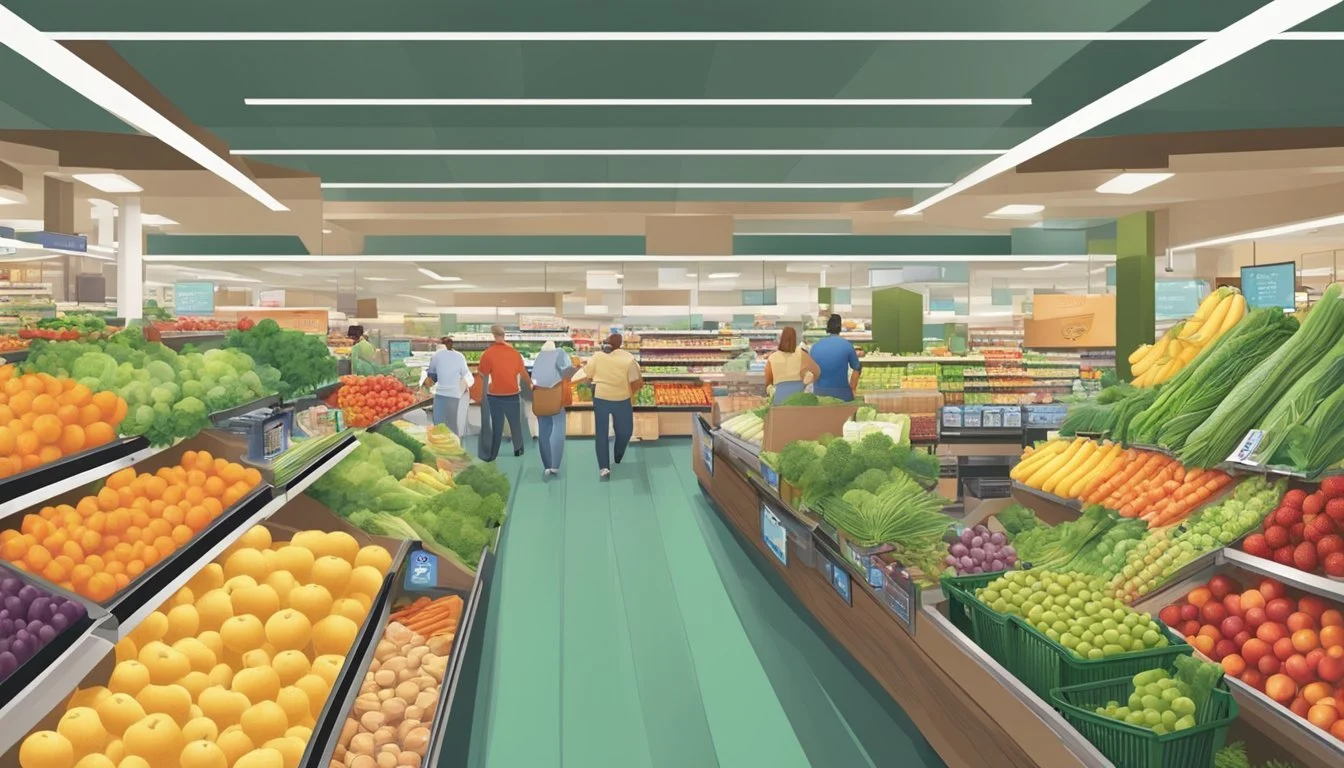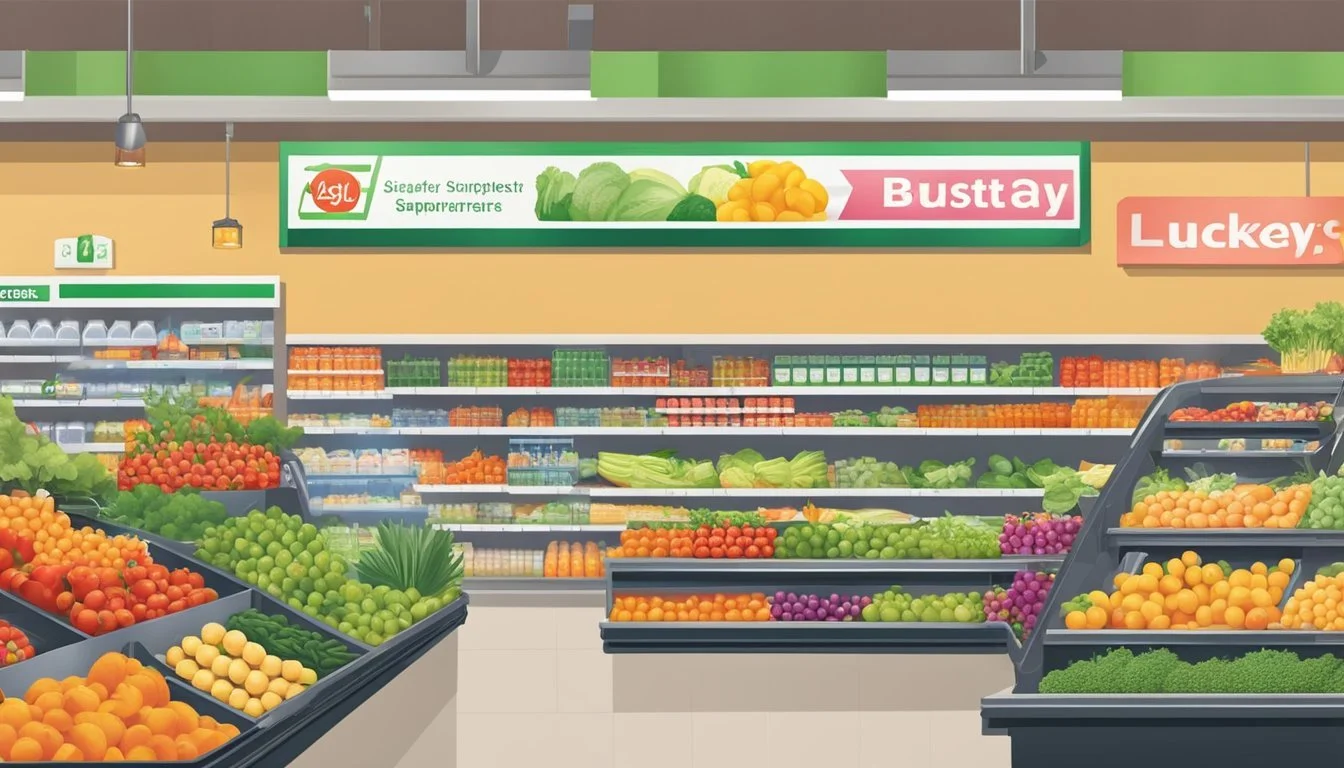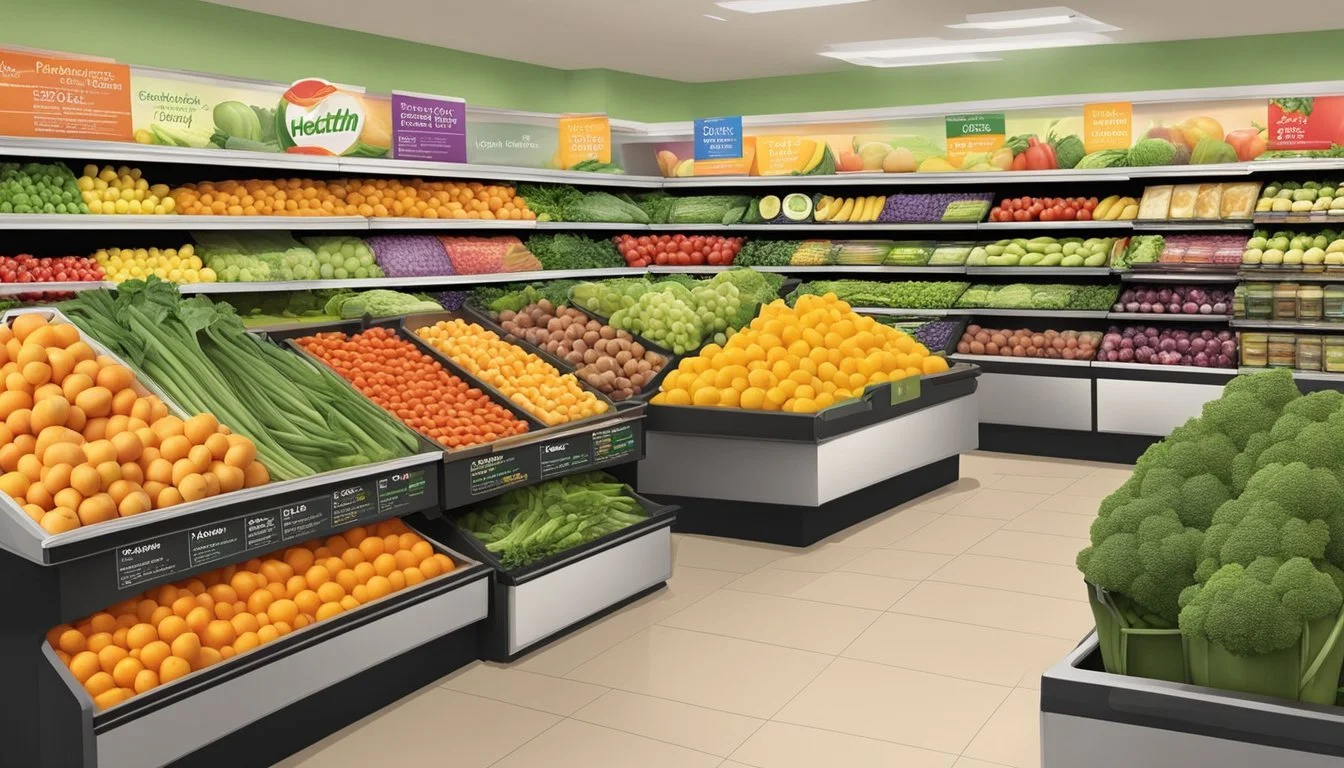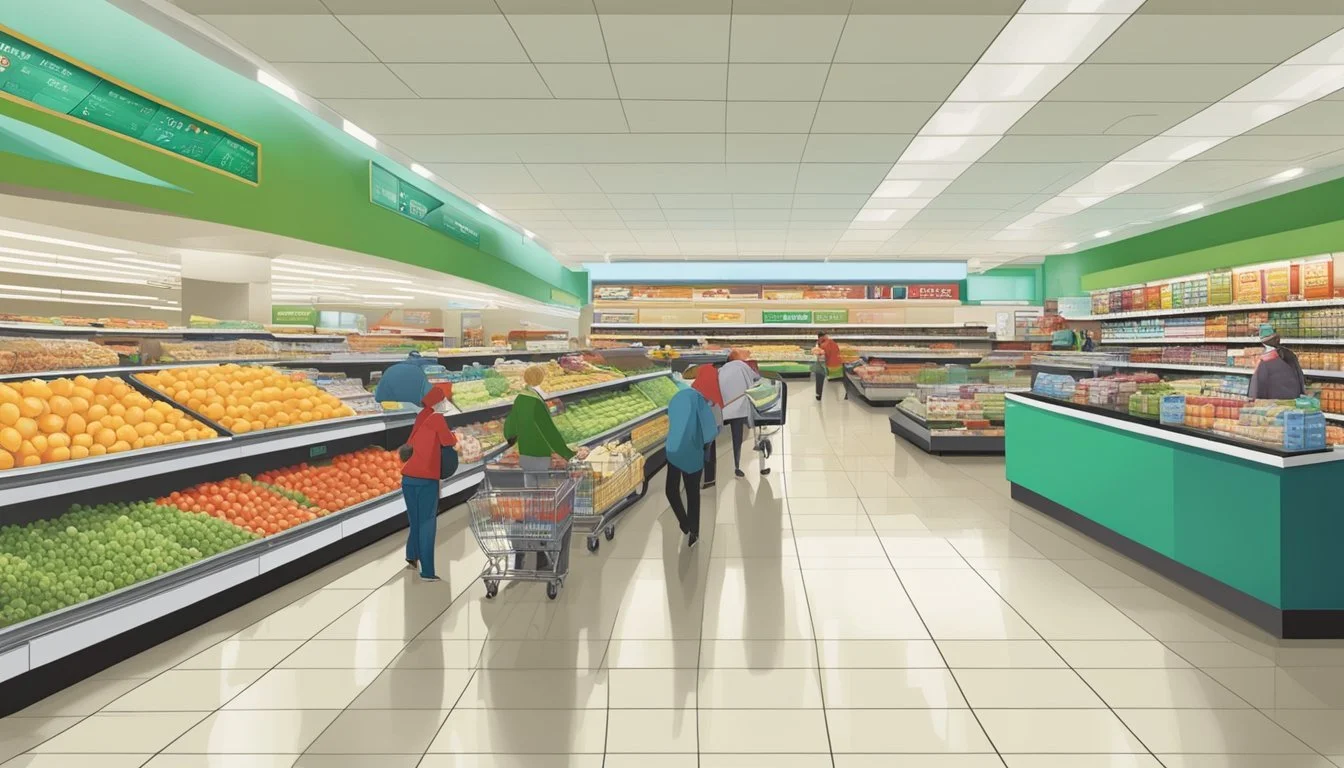Lucky Supermarkets vs Safeway
A Comprehensive Comparison of Prices, Selection, and Service
When it comes to grocery shopping in the Bay Area, two popular chains often come to mind: Lucky Supermarkets and Safeway. Both stores have their strengths and weaknesses, catering to different customer preferences and needs.
Price-conscious shoppers may find Safeway slightly more economical overall, while those prioritizing customer service and selection might lean towards Lucky's. Safeway often offers lower prices, especially for customers who take advantage of their Club Card discounts and weekly sales. Lucky's, on the other hand, tends to excel in produce and meat quality, potentially justifying their sometimes higher prices.
The choice between Lucky's and Safeway ultimately depends on individual priorities. Shoppers looking for the best deals might prefer Safeway's pricing strategy, while those valuing a more personalized shopping experience may opt for Lucky's. Factors such as store location, product availability, and specific weekly promotions can also influence the decision between these two grocery chains.
Company Backgrounds
Lucky Supermarkets and Safeway have rich histories spanning decades in the American grocery industry. Both chains have undergone significant changes and expansions over the years.
History of Lucky Supermarkets
Lucky Stores began in San Leandro, California in 1935. The chain expanded rapidly throughout the mid-20th century, becoming a major supermarket player in the western United States. In 1998, Albertsons acquired Lucky's parent company, American Stores. This led to the Lucky brand disappearing by 1999.
In 2006, SuperValu and an investment group purchased Albertsons. This acquisition brought changes to the former Lucky stores. Interestingly, in Northern California, the Save Mart Supermarkets company now operates stores under the Lucky name.
Lucky was known for its competitive pricing and neighborhood-focused approach. The chain's slogan "Low Prices Every Day" resonated with budget-conscious shoppers.
History of Safeway
Safeway's roots trace back to 1915 when M.B. Skaggs purchased a small grocery store in Idaho. The Safeway name was adopted in 1925, signifying the company's commitment to providing safe food at fair prices.
Throughout the 20th century, Safeway expanded across the United States and into international markets. The company pioneered several industry innovations, including self-service stores and parking lots for customers.
In 2015, Safeway merged with Albertsons, creating one of the largest food and drug retailers in the country. Today, Safeway operates over 900 stores across the United States and is known for its quality products and customer service.
Safeway has also developed a strong private label program, offering customers a range of affordable alternatives to national brands.
Pricing and Savings
Lucky Supermarkets and Safeway offer different pricing strategies and savings opportunities for shoppers. Their everyday prices, promotional deals, and loyalty programs impact overall grocery costs.
Comparison of Everyday Prices
Lucky Supermarkets generally offers lower everyday prices compared to Safeway. A recent price comparison found Lucky's to be $3.54 cheaper overall on a basket of common items. Lucky's excelled in produce and meat pricing, while Safeway had an edge in the pantry section.
For families spending around $250 per week on groceries, these price differences can add up. Lucky's competitive pricing on fresh items may appeal to shoppers prioritizing fruits, vegetables, and proteins.
Safeway's prices tend to be higher, but they compensate with frequent sales and promotional offers. Their larger size and wider selection can also justify some of the price differences.
Deals and Discounts
Both stores run weekly sales and offer digital coupons to help customers save. Safeway typically has more extensive sale circulars with a larger number of discounted items. Their "Just for U" program provides personalized deals based on shopping history.
Lucky's offers fewer but often deeper discounts on select items. They focus on aggressive pricing for staple goods and seasonal produce. Lucky's "Hot Deals" feature significant markdowns on popular products.
Savvy shoppers can maximize savings by comparing weekly ads and planning purchases around sales at both stores. Stacking manufacturer coupons with store promotions can lead to substantial discounts.
Membership and Loyalty Programs
Safeway's loyalty program is more robust, offering gas rewards, personalized pricing, and exclusive digital coupons. Members earn points on purchases that can be redeemed for discounts on groceries or fuel.
Lucky's rewards program is simpler but still provides value. Members receive exclusive weekly deals and earn points toward store credit. The program focuses on instant savings rather than long-term point accumulation.
Both programs are free to join and can lead to meaningful savings for regular shoppers. Safeway's program offers more perks but requires more active engagement to maximize benefits.
Product Range and Quality
Lucky Supermarkets and Safeway offer distinct product selections and quality standards. Their differences in produce freshness, meat offerings, and exclusive brands impact customer shopping experiences.
Freshness of Produce and Meats
Lucky Supermarkets prioritizes local sourcing for fruits and vegetables, often resulting in fresher produce. Their produce sections typically feature a vibrant array of seasonal items.
Safeway, while offering a wide range of produce, may not always match Lucky's freshness due to its larger distribution network. However, Safeway's meat department is known for its quality cuts and variety.
Both stores maintain strict quality control measures for perishables. Lucky tends to excel in fresh fruit offerings, while Safeway often has an edge in prepared meats and seafood options.
Variety of Offerings
Safeway generally provides a broader selection of products across categories. Their larger store formats allow for more diverse inventory, including international foods and specialty items.
Lucky Supermarkets focus on essential groceries and locally popular products. While their range may be narrower, they often stock items tailored to local community preferences.
In terms of organic produce, both chains have expanded their selections. Safeway typically offers more organic options, but Lucky has been increasing its organic inventory in recent years.
Exclusive Brands and Products
Safeway's Signature Select and O Organics lines offer customers high-quality store-brand alternatives. These exclusive brands cover a wide range of products from pantry staples to prepared foods.
Lucky Supermarkets features its SE Grocers brand, which provides value-oriented options. This line typically includes everyday items like bread and chicken, priced about 20% lower than national brands.
Both stores carry unique regional products, but Safeway's larger size often allows for more exclusive partnerships with specialty food producers.
Store Experience
Lucky Supermarkets and Safeway offer distinct shopping environments. Their layouts, customer service, and checkout processes shape the overall experience for shoppers.
Layout and Navigability
Lucky's stores typically feature a more compact layout. Aisles are arranged logically, with produce and bakery sections near the entrance. Signage is clear, making it easy for customers to find what they need. The smaller footprint can lead to crowded aisles during peak hours.
Safeway stores often have a larger, more spacious layout. Wide aisles and high ceilings create an open feel. Departments are well-organized, with clear signage and product groupings. The extra space allows for more variety in each section. Some shoppers find the larger format requires more walking to complete their shopping list.
Both chains regularly update their store designs to improve flow and product placement. This ongoing process aims to enhance the shopping experience for families and individuals alike.
Customer Service
Lucky's emphasizes personalized service. Staff members are often visible throughout the store, ready to assist customers. Many locations have a reputation for friendly, knowledgeable employees who can help with product inquiries or special requests.
Safeway focuses on efficiency and professionalism. Their stores typically have service counters in various departments, such as deli and pharmacy. Staff training emphasizes product knowledge and customer interaction skills.
Both chains have implemented customer feedback systems to improve service quality. Online ratings and reviews suggest that service experiences can vary by location for both Lucky's and Safeway.
Checkout Efficiency
Lucky's checkout process is generally quick, with a focus on personal interaction. Many stores maintain several open lanes even during slower periods. Self-checkout options are available at some locations, catering to customers who prefer a faster transaction.
Safeway has invested heavily in checkout technology. Most stores offer a mix of traditional lanes and self-checkout kiosks. During busy times, Safeway often opens additional lanes to manage customer flow. Their loyalty program integrates with the checkout process, applying discounts automatically.
Wait times can fluctuate based on store traffic. Both chains monitor checkout efficiency and adjust staffing accordingly. Safeway's larger stores sometimes experience longer lines during peak hours, while Lucky's compact layout can lead to congestion near the registers.
Convenience and Accessibility
Lucky Supermarkets and Safeway both strive to provide convenient shopping experiences for customers. Their locations, hours, and digital services play key roles in accessibility.
Location and Store Hours
Lucky Supermarkets operates over 70 stores across Northern California. Most locations are open daily from 6 AM to midnight. Some stores offer 24-hour service in urban areas.
Safeway boasts a larger footprint with over 250 stores in Northern California and Nevada. Their typical hours are 5 AM to 1 AM, with many 24-hour locations in major cities.
Both chains strategically place stores in residential areas and along commuter routes. Safeway tends to have more locations overall, potentially offering greater convenience for some shoppers.
Online Shopping and Delivery Services
Lucky partners with Instacart for grocery delivery. Customers can order through the Instacart app or Lucky's website. Same-day delivery is available in most service areas.
Safeway offers its own branded delivery service. Shoppers can use Safeway's website or mobile app to place orders. They provide same-day and scheduled delivery options.
Both stores offer curbside pickup. Lucky calls this service "Click & Collect," while Safeway terms it "Drive Up & Go."
Safeway's in-house delivery service may provide more consistent experiences. However, Instacart's wide coverage ensures Lucky can reach many customers.
Nutrition and Health Options
Lucky Supermarkets and Safeway both offer health-conscious shoppers various nutritious options. Their selections cater to different dietary needs and preferences, with a focus on fresh, organic, and specialty products.
Availability of Organic and Health-focused Products
Lucky Supermarkets provides a solid range of organic produce and health-focused items. Their stores typically feature dedicated sections for organic fruits and vegetables, though the selection may be more limited compared to Safeway. Lucky also stocks some gluten-free, vegan, and low-sodium products to accommodate dietary restrictions.
Safeway, on the other hand, offers a wider variety of organic and health-focused options. Their stores often have larger organic produce sections with more diverse choices. Safeway's O Organics line provides affordable organic alternatives across multiple product categories. For those with dietary restrictions, Safeway stocks an extensive selection of gluten-free, dairy-free, and plant-based items.
Both chains carry popular health food brands and offer their own private label healthy options. Safeway tends to have a slight edge in terms of variety and availability of specialty health products.
Community Engagement and Sustainability
Lucky Supermarkets and Safeway both recognize the importance of community engagement and sustainable practices. Lucky focuses on local partnerships and supporting neighborhood initiatives. They often host events and fundraisers for schools and charities in their store locations.
Safeway emphasizes environmental sustainability through energy-efficient stores and recycling programs. They have implemented LED lighting and improved refrigeration systems to reduce their carbon footprint. Safeway also partners with food banks to donate unsold but still edible products.
Both chains source some products from local farmers and producers when possible. This supports regional economies and reduces transportation emissions. Lucky tends to highlight these local offerings more prominently in their marketing.
In terms of packaging, Safeway has made efforts to increase recyclable and compostable options. Lucky has similar initiatives but on a smaller scale. Both encourage customers to bring reusable bags, though specific incentives vary by location.
Community feedback plays a role in product selection at both stores. Lucky seems more responsive to neighborhood preferences, while Safeway relies more on broader market research. This impacts the availability of culturally specific foods in different areas.
Neither chain has a perfect record, but both demonstrate a commitment to balancing profitability with social and environmental responsibility. Consumers can find detailed information on their websites or by contacting store management directly.
Financial Performance and Market Presence
Lucky Supermarkets and Safeway have experienced differing financial trajectories and market positioning in recent years. Their sales figures, expansion efforts, and overall market presence provide insights into their competitive standing in the grocery industry.
Recent Sales Figures
Lucky Supermarkets, owned by Save Mart Supermarkets, has maintained a steady presence in the California market. While specific sales data for Lucky is not publicly available, Save Mart reported annual revenues of approximately $4 billion in recent years.
Safeway, now part of Albertsons Companies, has shown stronger financial performance. Albertsons reported net sales of $71.9 billion for fiscal year 2022, with Safeway contributing significantly to this figure.
In terms of pricing, a comparison between Lucky and Safeway revealed that Lucky often offers lower prices on produce and meat, while Safeway tends to be more competitive in pantry items.
Expansion and Growth
Lucky Supermarkets has focused on maintaining its existing store base rather than aggressive expansion. The chain operates primarily in Northern California and Nevada, with approximately 70 locations.
Safeway, leveraging its position within Albertsons, has pursued a more active growth strategy. The company has invested in store remodels and digital initiatives to enhance customer experience.
Safeway's market presence is substantially larger, with over 900 stores across the western and central United States. This extensive network gives Safeway greater purchasing power and economies of scale compared to Lucky Supermarkets.
Both chains face increasing competition from discount retailers and online grocery services, prompting investments in e-commerce and delivery options to retain market share.
Consumer Perceptions and Brand Reputation
Lucky Supermarkets and Safeway have distinct reputations in the grocery industry. Customer feedback and brand loyalty play crucial roles in shaping public perceptions of these two chains.
Public Ratings and Reviews
Lucky Supermarkets generally receives positive reviews for its competitive pricing and product selection. Customers often praise the chain's fresh produce and meat departments.
On review platforms, Lucky typically earns 3.5 to 4 out of 5 stars. Many shoppers appreciate the stores' cleanliness and friendly staff.
Safeway garners mixed reviews, with ratings averaging 3 to 3.5 stars. Patrons frequently comment on the chain's convenient locations and wide variety of products.
Some customers express concerns about Safeway's pricing, feeling it can be higher than competitors. Others note inconsistent experiences across different store locations.
Brand Loyalty and Trust
Lucky Supermarkets has cultivated a loyal customer base, particularly in California. The chain's focus on value and community involvement resonates with many shoppers.
A recent survey found that 68% of Lucky customers consider themselves "very loyal" to the brand. The store's rewards program contributes to this loyalty.
Safeway benefits from strong brand recognition and a long-standing presence in many markets. The chain's pharmacy services and fuel rewards program help retain customers.
About 62% of Safeway shoppers report high brand trust, citing the store's reliability and product quality. The company's digital initiatives, like online ordering and delivery, have boosted customer satisfaction in recent years.







